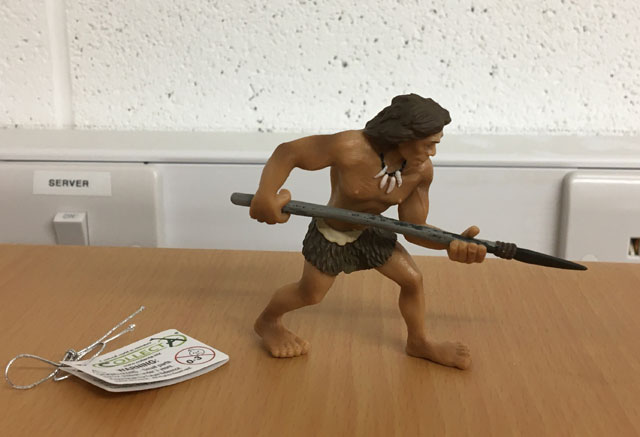X-Woman – A New, Third European Hominid Competing with Us and Neanderthals
Finger Bone Provides Evidence of Third Species of Human
Researchers at the Max Planck Institute of Evolutionary Anthropology in Germany have published a paper in the scientific journal “Nature” suggesting that there was a third species of ancient hominid inhabiting Europe. A preliminary analysis of genetic material extracted from a human finger bone has indicated that a there were three types of human around between 50,000 and 30,000 years ago – modern humans, Neanderthals and a third unknown species.
Studying Fossils from a Cave in Siberia
Anthropologists excavating a cave in southern Siberia in 2008, the cave site was known to have been inhabited by early Europeans, found the fossilised digit (perhaps a bone from the little finger). A genetic analysis indicates that this is a previously unknown human relative. The bone ascribed to a female, nick-named “X-Woman” by the scientists may represent a new species of ancient human. Although the researchers state that their conclusions are based on preliminary examinations and that they have a lot more to learn about “X-Woman”, the fossil may represent a new species of hominid that migrated out of Africa.
The cave from which the bone from the fifth digit (little finger) was discovered is known as the Denisova Cave, it is in Siberia’s Altai mountains. Other finds from the research team include bangles and bracelets, but when the mitochondrial DNA from the bone was extracted and compared to H. sapiens (our own species), and the robust H. neanderthalensis it was found to be different from both, indicating a new species of early hominid.
A Model of a Neanderthal Man

Picture credit: Everything Dinosaur
To view the CollectA range of figures and models: CollectA Prehistoric Life Models.
Genetic Analysis of Hominid Finger Bone
The genetic analysis hints that X-Woman may represent a third wave of hominids that migrated out of Africa during the last two million years. The migration taking place between the earlier Homo erectus two million years ago, that gave rise to modern humans, and ancestors of Neanderthals, who many researchers left Africa half a million years ago.
Commenting on these findings, Svante Paabo, of the Max Planck Institute stated that a comparison of the DNA with genetic material from anatomically modern humans and Neanderthal shows “X-Woman” descended from a common ancestor about a million years ago.
Paabo stated:
“So whoever sort of carried this mitochondrial genome after that, [we think] about a million years ago, is some new creature that has not been on our radar screen so far.”
Fossil evidence of descendants of Neanderthal and modern human ancestors has also been found in the Siberian region near “X-Woman”, further supporting evidence that this new discovery may indicate a previously undiscovered hominid species.
Mitochondrial DNA
Scientists analysed the fossil’s mitochondrial DNA, primitive genetic material taken from subcellular particles called mitochondria, which provide energy for the cell. Researchers are now conducting a fuller analysis of DNA extracted from the cell’s nucleus which codes for the entire organism. Anthropologists are particularly interested in mitochondrial DNA as this is passed down from mother to child (maternal route), without combining with male DNA. This enables scientists to track changes and establish links between different samples, much more clearly.
Professor Chris Stringer of the Natural History Museum (London), an expert on early human origins described this discovery as “a very exciting development”.
He went onto add:
“This new DNA work provides an entirely new way of looking at the still poorly-understood evolution of humans in central and eastern Asia.”

